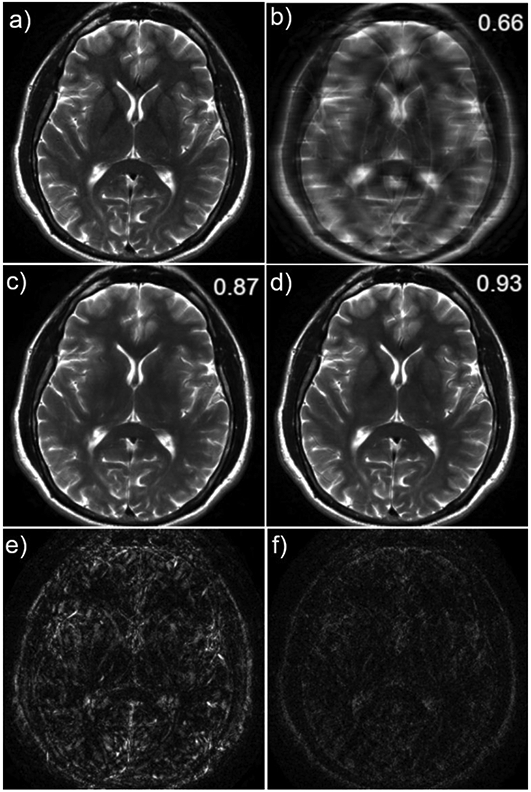Figure 2.

Example illustrating the difference between image post-processing and image reconstruction of a 4X accelerated T2-weighted brain image. These results were obtained using a convolutional neural network for image reconstruction (4) and a modified version of this network not utilizing the raw data for image post-processing. The fully-sampled reference is shown in (a), and the zero-filled reconstruction in (b). The image post-processing result is shown in (c) and the reconstruction result is shown in (d). The absolute errors are shown in (e) and (f). The displayed values are structural similarity index (SSIM) (60) – a measure of similarity between the network output and the target, in this case the fully-sampled image (a). SSIM values range from 0 to 1, where 1 indicates perfect agreement. In this example of generating high-quality images from under-sampled data, the result obtained from the image reconstruction tool utilizes information from the raw data and outperforms the post-processing tool. The reconstruction has fewer residual artifacts and less blurring with better preservation of important structures such as the globus pallidus. It has not been established in the literature whether image reconstruction will always outperform image post-processing, or vice versa, in other applications.
